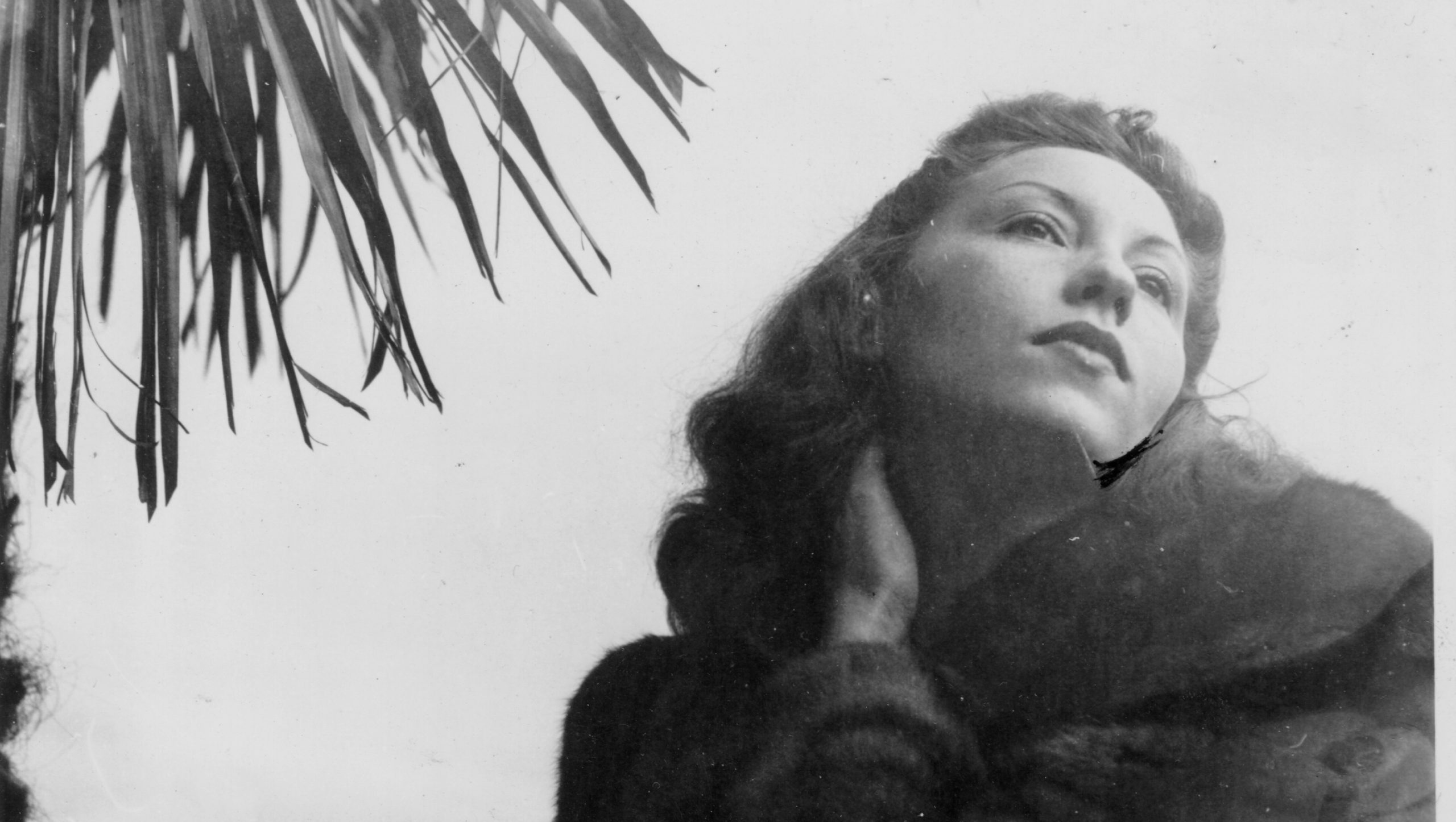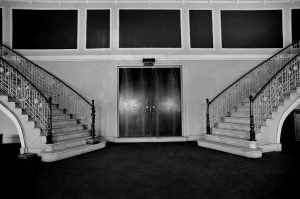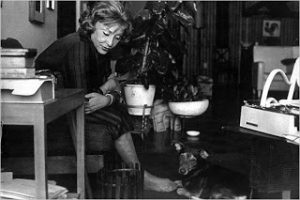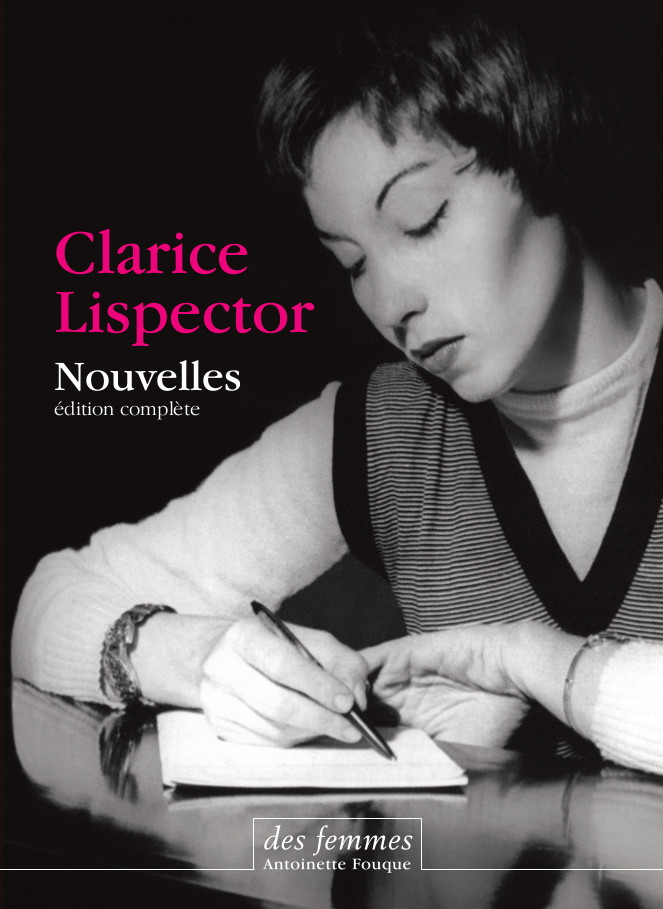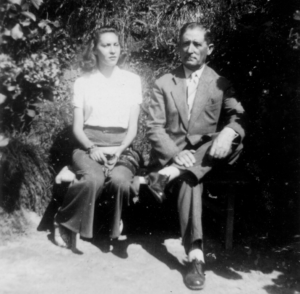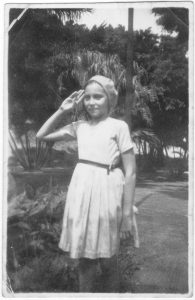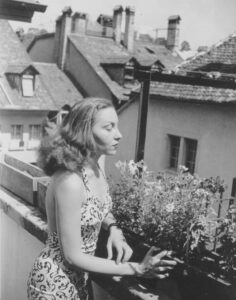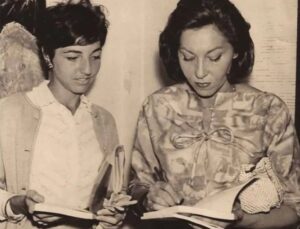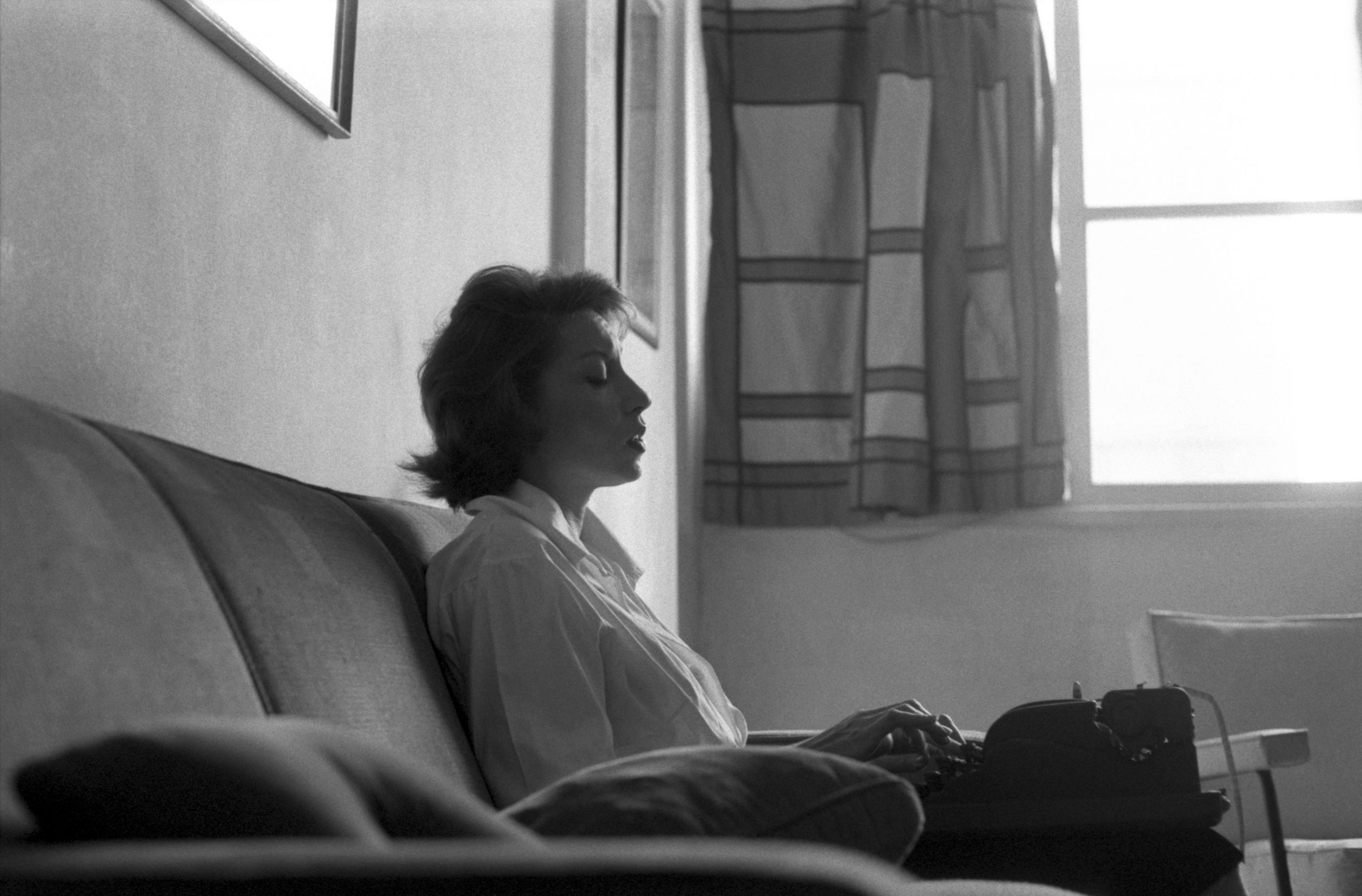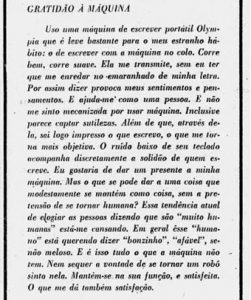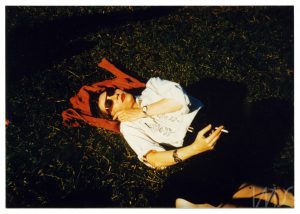, Clarice and Lucrécia in Bern. IMS Clarice Lispector, 2017. Disponível em: https://site.claricelispector.ims.com.br/en/2017/10/30/clarice-e-lucrecia-em-berna/. Acesso em: 06 January 2026.
The following text comes out of research on the correspondence between Clarice Lispector and her sisters Tania Kauffman and Elisa Lispector during the period in which she was in Switzerland, that is, 1946 to 1948. Based on this context, the author Marcos Antônio Notaroberto* launches into these letters – currently under the care of the IMS – and the construction of the novel The Besieged City by combining both Clarice’s somewhat voluntary exile and that of Lucrécia, the character in the novel that would be published only in 1948.
Lands of Bern
Clarice Lispector arrived at the Swiss city of Bern in April of 1946, after the removal of her husband who had been serving as the vice-consul in Naples since 1944. At this point, she was already the author of two novels. Her debut novel, Near to the Wild Heart, written in Brazil and published in 1944, earned her mostly positive reviews due to its innovative language in the panorama of Brazilian literature up to that time.
One of the critics who wrote about the novel was Antonio Candido, who said Near to the Wild Heart was
within our literature, a performance of the greatest quality. The author — who seems to be a young novice — seriously explored the problem of style and expression. Especially the latter. She felt that there is a certain affective and intellectual density that is not possible to express if we do not seek to break routines and create new images, new tourneys, different associations that are less common and more deeply felt. The discovery of the everyday is an ever possible adventure, and its miracle a transfiguration that clears the way for new worlds.
Sergio Millet would point to the appearance of Clarice Lispector’s work
“as the most serious attempt at an introspective novel. For the first time, in this almost unexplored area of our literature, a Brazilian author goes beyond simple approximation. For the first time, an author penetrates deep into the psychological complexity of the modern soul, fully attains the intellectual problem, turns repressed feelings inside out, without pity or concessions.”
Such reviews that acclaimed her as a literary exponent right at her debut, mainly for treating the appearance of the novel as a paradigm shift in Brazilian literature, “a very serious stylistic experiment” (Oscar Mendes, August 1944), characterized her way of entering “the canon of literary history as a rupture (clarity, brilliance, remarkability) in a dull horizon.”
The consequence of this debut provoked in the public imaginary an aura of “mythical figure” (something that still endures) around Clarice, and the weight of this responsibility rested on her shoulders in the form of great expectations for new brilliant writings.
Her second novel, The Chandelier, was published in 1945. The reviews were not so positive as those of its predecessor, leaving Clarice Lispector, already far from her country, depressed. “The work [was] somewhat overshadowed by the debut of the diplomat João Guimarães Rosa in literature, with Sagarana, which captured the attention of critics” at the time, and it was not well received by readers.
In 1946, Clarice began to write her third novel, The Besieged City, while already established in Bern, where she lived for three long years. The same amount of time necessary to complete the novel, which was published in Brazil in 1949 by the A Noite publishing house.
The years spent in Bern were difficult for Clarice Lispector mainly due to the absence of family and friends, as well as her inability to adapt to the city, which she described as a sort of tomb.
There is, in this period, an intense exchange of correspondence with a variety of Brazilian writers and intellectuals, including Manuel Bandeira, Lucio Cardoso, Fernando Sabino, and João Cabral de Melo Neto (the latter two living outside of Brazil), in which the writer touches on issues related to her situation as a foreigner.
Later, Clarice would return to the feelings of desolation during her time of exile in chronicles, some of which were biographical, published in the Jornal do Brasil between August of 1967 and December of 1973.
Recalling her period in Bern, she writes in “Night in the Mountains” (“Noite nas montanhas”):
It is so vast. So unpopulated. The Spanish night has the scent and hard echo of dancing feet, the Italian night has the warm sea even if absent. Bern night has the silence. One tries in vain to work in order not to hear it, think quickly to disguise it. Or invent some activity, fragile bridge that barely connects us to the suddenly improbable tomorrow. How to overcome this peace that observes us. Silence so great that despair is modest. Mountains so high that despair is modest. The ears are sharpened, the head is inclined, the whole body listens: no noise. No rooster. How to be within reach of this deep meditation on silence. Of this silence without remembering words. If you are death, how to reach you. […] So, if there is courage, one doesn’t fight anymore. One enters it, goes with it, we the only ghosts of a night in Bern. Enters. One does not wait for the rest of the darkness before it, only it. It will be as if we were on a ship so enormous that we were unaware that we were moving. More than that, man cannot do. Live on the edge of death and stars is a more tense vibration than the veins can withstand. There is not even a son of a star and a woman as a pious intermediary. The heart must present itself before nothing alone and alone it beats loudly in the darkness.
In “Silent Communication” (“A comunicação muda”), Clarice takes the writing of The Besieged City as a refuge in the midst of her unhappy and silent situation. In this chronicle, she narrates that salvation
“from the monotony of Bern was to live in the Middle Ages, was to wait for the snow to stop and the red geraniums to be reflected in the water again, was to have a son who was born there, was to have written one of my least favored books, The Besieged City, however, re-reading it, people start to like it; my gratitude for this book is enormous: the effort to write it saved me, saved me from that terrifying silence of the streets of Bern, and when I finished the last chapter, I went to the hospital to give birth to the boy. Bern is a free city, so why did I feel so trapped, so segregated? I would go to the movies every afternoon, regardless of the film. At that hour of dusk, alone in the medieval city, under the still light flakes of snow – at that time I felt worse than a beggar because I didn’t even know what to ask for.”
Clarice experienced such a sensation of exile that it resonated in her writing, both in her correspondences and in the novel itself.
However, the place that Clarice Lispector chose to speak more openly about the hardships of life in Switzerland was in her family correspondence. Letters exchanged with her sisters Elisa Lispector and Tania Kaufmann record the moment of profound dissatisfaction lived by the artist and clearly demonstrate how her voluntary exile was the integration between a body in the world and the word; experience in the form of an explosion in language.
Clarice’s exile
Please, please, please, write me
April 13, 1947
Haia Lispector was born in 1920, in exile. Daughter of Russians, the girl came to the world in the Ukranian village of Tchetchelnik during her family’s immigration route to America, due to the successive wars and anti-Semitic persecution perpetrated in Russia during the Bolshevik Revolution.
Clarice Lispector, however, was born in Brazil, more specifically in the Northeast, in Recife, the land where she was raised. About this experience, she writes in The Discovery of the World:
“I grew up in Recife, and I think that living in the Northeast or North of Brazil is living the true Brazilian life more intensely and up close […] I made the Portuguese language my inner life, my most intimate thought, I used it for words of love. I started to write little stories as soon as I became literate, and of course I wrote them in Portuguese.”
The political exile experienced by Haia will not be considered here. It is interesting to think of Clarice’s voluntary exile, occasioned by her marriage to Maury Gurgel Valente.
Exile, whatever the case, is an “unhealable rift forced between a human being and a native place, between the self and its true home” (Edward Said, Reflections on Exile and Other Essays). Two widely opposed feelings arise from this rift: the pain of loss and the enthusiasm for the challenge of adaptation.
For the body to survive in exile, the pain needs to be buried by the enthusiasm. Life’s challenges in new frontiers end up anesthetizing the feeling of loss in the foreigner, thus leading to a gradual and exponential uprooting until arriving at the necessary forgetting or transformation of affective memory into recollections.
All the “pathos of exile is in the loss of contact with the solidity and the satisfaction of earth” (Said, op. cit.), and this overcoming is intimately tied to turning one’s back to one’s homeland, which culminates in a matricide. Matricide is the reaction of erasure. Foreigners, considered in terms of political power and legal rights, are touched by the feeling of dislocation with reference to the spatial loss, which impels them to look at their native society as a strange and threatening homogenous body.
The abyss between foreigners and all the components of strange lands stops them from integrating and consequently possessing rights. Thus arises the desire to erase origins, which for its part comes from a greater desire to belong that always moves foreigners to create new sociopolitical roots in the space of the other.
However, the act of disconnecting from the uterus causes anguish, another type of the same initial pain of separation, and of a “hard-hearted indifference” to the new environment, including the people with whom one lives. This “[h]ard-hearted indifference is perhaps no more than the respectable aspect of nostalgia. We all know the foreigner who survives with a tearful face turned toward the lost homeland. Melancholy lover of a vanished space, he cannot, in fact, get over his having abandoned a period of time” (Julia Kristeva, Strangers to Ourselves).
In Clarice Lispector’s case, the exile did not exactly follow this pattern. The writer did not perform matricide precisely because she impatiently waited to return to her country of origin and to everything that it represented, and despite keeping herself somehow connected to the uterus of her land, the experience became even more distressful due to the simple fact of not being there.
That is the crucial difference between voluntary exile and political exile. Both encompass all the characteristics of loss inherent in the term, but the latter means that the return home is out of the question while the former leaves a door ajar, thus making it more difficult for the individual to overcome the exile and to spatially and psychologically integrate.
The need for control that subjugates the exiled in the face of their disorienting state of loss requires them to create a new world. In the role of demiurge, the exiled produce a space apart from their reality, which is “logically artificial.” In the case of writers, this other place arises in the very act of writing in constant motion.
In her period of exile in Bern, Clarice wrote, in addition to The Besieged City, countless letters to Elisa and Tania. The writer took refuge in the womb of her language and incessantly asked her sisters to strengthen the ties that brought her back to the bosom of her family in the other continent.
“The foreigner, thus, has lost [her] mother” (Kristeva, Strangers to Ourselves).
As it was for Dante, who wrote The Divine Comedy in his exile from Florence, writing in her native language was, for Clarice, “endowing [herself] with a universe at the very moment when [her] own and proper place is lacking (Kristeva, Strangers to Ourselves).
The vital importance of correspondence for the exiled becomes clear in her case. The writing of her third novel was something that did not totally satisfy her need for refuge.[1] She says in her letters:
“You don’t know how it is to receive letters when you’re away, above all away like me, entirely away: you ask yourself without hope, but full of hope and almost certainty: are there letters for me?
In this life of mine away I’ve learned to feel sometimes as if I were going to receive a letter […] With the effort of waiting across the entire world for the letter that never comes, it seems that I have finally gotten in touch with you across the distance.
If you have time please write me. Whenever I receive letters is a glorious day, all of Bern flaps its wings in delight.”
Now, every letter received needed to be answered by another! And that is how Clarice passed the time always waiting for the contact from home that she desperately needed. In the family correspondence from this period, there are often complaints with reference to the infrequency of letters. The letter dated June 30, 1946 begins like this:
My dears, no letters to answer, once again. But I keep on writing. The last letter I received was on the twentieth, dated the 15th. I fear that you are forgetting me. You’ve shelved me too fast. From my prison in Bern, I’m sending you my emotional regards…
Correspondence becomes unique when “it makes us participate in different states, even states of the soul (and of the body) of whoever wrote it” (José-Luis Diaz, Quelle génetique pour les correspondances?), and Clarice transmits in writing all the feeling of incompleteness experienced at that moment, which without a doubt supplements her work.
What can be seen in reading Clarice’s correspondence with her sisters, especially with Tania, is the experimentation of this new world of sensations offered or developed by exile, through writing. In this manner, the intense letter-writing that surrounds the genesis of The Besieged City is also revealed as an interesting place for her “creative laboratory.”
The letters clearly exhibit her complicated relationship with the writing of the novel and observe, in sum, its plot and the construction of the characters, which are entangled in gloomy emotions.
In the letter dated October 22, 1947, Clarice says to Tania:
The book is, so to speak, finished. God knows it’s worthless, darling. I believe that in about two months I can call it quits. As it happens, I’ll end it because I’m sick of it. It was the work that made me suffer the most. I’ve been tinkering with it for three years, abandoning it and returning to it. And it’s only been about three months since I finally found out what I was trying to say in it… This book has been copied, destroyed, resurrected, I don’t know, a thousand times. One of these days, picking up one of the more recent copies (quite different from the current one) – I felt physically nauseous as I remembered how I suffered because of every part of it and how I saw that it was useless. I had to stop thinking about it for days – because this curious disgust from the pain persisted in me. Anyway, dear, the book is horrible.
In the same letter, she reiterates about her period as a foreigner in Bern:
“I haven’t evolved at all, I haven’t attained anything. I still have my head in the clouds, I remain vague and dreamy, shifting in some way the meaning of life. […] Throughout this
3-year period, my mal-adaptation has played a major role.”
Such declarations about her disadaptation and vagueness will be glimpsed mainly in the protagonist Lucrécia Neves and in the city-character of São Geraldo. Both the woman and the city are somnambulistic and barren. The sleep state, the exile, the feeling of uprootedness and its consequences are some of the sensations abundantly encountered in the letters that likewise pervade the whole novel.
Finally, in 1949, The Besieged City was published in Brazil. Coincidentally, in the same year that Clarice Lispector returned to her homeland. It is assumedly her least liked novel, which gives it the status of a scar on the body of her literature. A scar that underscores it as an anomaly in all of Clarice’s work, which is widely known for its monological, profound, and epiphanic characters. In the middle of all the writer’s production lies Lucrécia Neves as the contrary, as primitive, as shallow. After all, a foreigner.
The character closely accompanied Clarice’s exile. Or rather, Lucrécia Neves, a foreigner in her own land, comes to be the very pathos of dissatisfaction in the geographical exile that is unfolded into another type: exile from oneself.
Lucrécia’s exile
We know what is really out there only from
the animal’s gaze; for we take the very young
child and force it around, so that it sees
objects–not the Open, which is so
deep in animals’ faces. Free from death.Rainer Maria Rilke
The sensations that pervade The Besieged City are lethargic. The whole life of the protagonist Lucrécia Neves revolves around a non-action, of being driven by the circumstances. Clarice’s letters are also pervaded by these sensations.
I seek to make evident some of these sensations [2] in both the novel and the letters, and to read them side by side in order to think about their manifestations and developments. However, for this reading perspective, it is once again necessary to underscore that “the work was not considered here as a message or remnant, as the simple translation of some inner meditation or as the half-erased trace of any ineffable ecstasy. The writing is also part of the most intimate experience; it espouses its structures, but it is to modify them, revert them” (J.P. Richard, Littérature et sensation: Stendhal/Flaubert).
Exile, uprootedness, and apathy
When we open a book and look down, we see the letters in rows, the words in order forming sentences charged with being legible, with giving some meaning. To all of these components of the page, from the first letter of the chapter until the number that orders them, are attributed functions for the construction of a whole: the book.
There is nothing more analogous to a city than a book. If we looked from above, pushed away the clouds, and got closer with our eyes to a city, we would see people as we see words. Each in his or her own place, each with a function and meaning. Working, working, working… Or not.
The besieged city is uncomfortable. The effort to escape the enclosure weighs upon it. Its citizens are there, blended into its solidity, surrounding it until they escape. There are various types of people in the city, but two are looking through the window with their heads out. A man named Perseu and a woman named Lucrécia. Who are they? They are the discomfort.
Perseu did not seem to feel more than his own harmony, because “this was his degree of light. It didn’t matter that in the light he was as blind as others in the dark. The difference is that he was in the light.”
Lucrécia was of a nature that seemed not to “reveal itself: it was a habit of hers to lean forward when talking to people, her eyes half-closed– she’d seem then, like the suburb itself, excited by an event that wasn’t set in motion. Her face was inexpressive unless a thought made it hesitate. Though it wasn’t this possibility of wit and sweetness that she was making the most of.”
The man, “slow, and sun-lit,” was in the city. The woman, half-closed and in the dark, was in the city. They both imitated São Geraldo, but the woman imitated it badly, sinking in her exile. “She’s like one of the foreigners who’d say: “that’s how it is my country.’” But which country?
Perseu and Lucrécia had the land in common, but nothing else. Perseu was what Lucrécia was unable to be; he was part of something. After an unsuccessful attempt at romance, she, married to a foreigner and ready to leave, says goodbye to him by calling him brother.
Later she would return to the suburbs, frightened by the metropolis that was not what it should be. The metropolis was violent with Lucrécia, for it was not direct with her. And bewildered by her sudden uprootedness, she hoped that in São Geraldo still the “street was a street, a church a church, and even the horses wore bells.” But the time was lost and could not be regained. São Geraldo had become restless and Lucrécia feared it, also.
São Geraldo was no longer at its starting point, she had lost her old importance and her inalienable place in the suburb. There were even plans to build a viaduct to connect the hill to the lower city… the plots on the hill were already beginning to be sold for future residences: where would the horses go?
The disarrangement of the modern city, where things are not what they seem, abandons the woman, who is always spiraling in search of something. Her “crude spirit” is unable to assimilate progress and always wishes to be touching the archaic, raw nature that is fading away.
Lucrécia only saw, “everything that Lucrécia Neves could know of herself was outside her.” She remains exiled from herself like a thing. And “when a thing didn’t think, the form it had was its thought.” Without thoughts, this woman is apathetic. She takes the form that people perceive in her and for her everything is more than fine.
Such sensations that pervade the novel also occur in Clarice Lispector’s correspondence. The writer in exile is uncomfortable. She says to Tania, her sister, that she is tired of “trying through thinking to exit the life that [she leads] that she neither [has] the taste or the strength to work.”
Ever since I left Brazil to go to Naples, ever since I went to Belém, my life’s been a daily effort to adapt to these arid places. […] Ever since then my head’s been all messed up, everything I do is difficult, I’m so apathetic, […] I do everything with my fingertips, without intermingling with anything. It’s been three years like this, three daily years.
With respect to the book that she was writing about the city and about Lucrécia, she says: “My book is on hold. I don’t even know how to continue. I abandoned it too many times, and now I would need to relive it all to transform it.”
Clarice faces enormous apathy due to her uprootedness, which materializes in her letters:
I’ve been experiencing a new wave of apathy, which is an old thing… I end up thinking that not even returning to Brazil will fix me. But I’ve been dreaming about it. In August we’ll have spent 5 years abroad. Not five days. Five years of not knowing what to do, five years during which, every day, I’ve been asking myself like I’m asking you: what do I do? For you to have an idea of what my life’s been like these past few years: for me every day is Sunday. Sunday in São Cristóvão, in that house’s huge terrace. People individually lose so much of their importance, living like this, away, and idle. Life begins to stop inside, and one no longer has the strength to work or read. A watched pot never boils. Europe is the world, the best things still come out of Europe. I don’t know anyone and I feel crushed by this abstract entity that I’ve been unable concretize into any friend. Bern is a tomb, even for the Swiss. And a Brazilian is nothing in Europe. The actual expression is: being crushed.
Sleep, Inertia, and Boredom
Time in the novel is the time of sleep, non-time.
He’d barely spoken when the church bells struck their first chime, golden, solemn. The people seemed to hear space for a moment… The banner in an angel’s hand froze trembling. But suddenly the fireworks rose and exploded amidst the chimes. The crowd, roused from the sudden sleepiness to which they had succumbed, abruptly started moving and once again cries burst out on the carousel.
The narrative begins at a town celebration for the patron saint of the city, Saint Gerald. The party appears like an ancient pagan ritual where a giant bonfire, at the center of the church square, flickers in the eyes of the people who, like moths attracted by its vivid light, dance around it hypnotized and amazed.
However, in the city named after a saint, Dionysius is absent. “Drowsy, stubborn, people were elbowing one another until joining the silent circle that had formed around the flames.”
The people of São Geraldo are sleepy. The sensation is of still being in neutral terrain where there is no rush, or schedules. Temporal perception in the novel goes hand in hand with spatial disadaptation, which is why time no longer acquires much importance and the days may seem years or years may seem days.
The writer experiences the weight of time in Bern. She says in a letter to Tania that “the months pass quickly, fortunately. The days sometimes are what don’t pass.” And still speaking of Switzerland, she reflects:
Switzerland is solid and when we open our eyes in the morning we know it is there where we left it. It does not have the character of a magnanimous land such as Italy, for example, or France, where things are spontaneous and varied which end up causing some confusion in the environment; here everything has its right place, there’s silence and dignity. An excessive dignity at times; Lausanne is different from Bern; people have a more lively air, look at each other more, the city is larger and seems more scattered. While Bern seems like it was cut out…
Lucrécia is sleepy. In her inertia, the “the girl didn’t have any imagination, but a watchful reality of things that was making her almost sleepwalk; she was needing things in order for them to exist.”
The sound of her yawning echoes throughout her story. After her near epiphany, her only dangerous moment. “Lucrécia Neves yawned freely so many times in a row that she looked like a madwoman, until breaking off satiated.”
Sleep, inertia, and boredom transform São Geraldo into an eternal Sunday, silent and opaque, which leads the characters always to a desire greater than sleep, always to an opposite of living.
“The township of São Geraldo, in the year 192…” seems like a silent film in black and white and in slow motion, like in a dream Lucrécia told to Perseu:
This morning I was sleeping” — she said suddenly like a child — “when something woke me, but then I fell back asleep and dreamed that someone was giving each person their lost sleep, in order for us to get it back, you know? Then they asked me if for me it was a thousand or two thousand years of sleep, so I said two thousand, then they closed my eyes again and so I…
She stretches, opens her mouth, and goes back to sleep. Snowflakes fall slowly outside and everything is magical, strange, and without pleasure.
The ecstasy of vision
Due to the exile from herself, Lucrécia Neves suffers exile within the universe of characters from Clarice’s work.
The literary critic Benedito Nunes, in his essay “A cidade sitiada: uma alegoria” (The Besieged City: An Allegory), points out a few aspects that differentiate the novel and its characters from its predecessors, Near to the Wild Heart and The Chandelier:
The first aspect to be considered in Clarice Lispector’s third novel […] is the presence of an environment, the suburbs, that circumscribes the gestures and acts of the characters, including and mainly those of the protagonist. Changes in the environment delimit the romantic action, which begins with them and ends when they are completed.
He furthermore highlights, as a second aspect, “the succession of episodes that together make up static frameworks of provincial life, some of which excel in caricatural details and satirical intention.”
For Benedito Nunes, the novel possesses
elements that enhance the humor, which is absent in previous novels, as a particular dimension in the work […] the narrator distances herself from the heroine and, uncommitted to her experiences, lends to her gestures a machine-like quality, and to her most secret thoughts a comic emphasis […] Humor in The Besieged City neutralizes reality, dissolving it into a succession of mistaken appearances.
The theorist Olga de Sá offers a similar reading. In Clarice Lispector: a travessia do oposto (Clarice Lispector: Crossing Opposites), the chapter dedicated to the novel is called “A reversão paródica do ver em espiar” (The parodic reversal of seeing in spying). In it, Sá characterizes the framework of the novel as one of parody by basing her analysis of Lucrécia Neves on a comparison with the protagonists of Near to the Wild Heart and The Chandelier, Joana and Virginia.
In the petit-bourgeois life of Lucrécia, nothing penetrates her opacity. The character is inaccessible to renewals and is content with scraps. But it must be noted that such scraps do not actually exist. Deprived of analytical thought and imagination, Lucrécia feels happy and fulfilled.
In Chapter 5 of the novel, “Public Statue,” the protagonist experiences a moment of near revelation, “however, once more the suburban atmosphere pervades the living room and we do not have an epiphany, but its parody.”
The graceful epiphany and flexibility of harmonious movements and gestures in Joana’s experience is different from what affects Lucrécia. It is the “opposite of epiphany […], a deformation and caricature, tic. These parody those, so that Lucrécia, instead of being born for the life of a woman, is immobilized into an object, into a statue.”
So she stretched out one of her hands. Hesitant. Then more insistent. She stretched it out and then suddenly twisted it showing her palm. In the movement her shoulder lifted crippled… But that’s really how it was. She stuck out her left foot. Sliding it across the floor, the tips of her toes diagonal to her ankle. It was somehow so twisted that it would not return to its normal position without scrambling itself around. With her palm cruelly exposed, her outstretched hand was asking, and at the same time: Pointing. […] So humble and irate that she wouldn’t be able to think; and that’s how she was giving her thought through its only precise form – wasn’t that what happened to things? – inventing out of powerlessness a mysterious and innocent sign that could express her position in the city, choosing her own image and through it the image of the objects. In this first gesture of stone, whatever was hidden was given outward expression with such prominence. Keeping, for its protection, the same incomprehensible character: the inexplicable rosebud had opened trembling and mechanical into an inexplicable flower.
Therefore, without introspection, inner life occurs thanks to the character’s circumstances in a context of facts and events. The critical analyses of Benedito Nunes and Olga de Sá passionately point out the parodic tone that the novel establishes with its predecessors; a parody that grants the novel the pathos of exile which is repeatedly reaffirmed in its most varied nuances.
Nevertheless, there is another possible reading of The Besieged City as a novel that is not genealogical but independent from the writer’s oeuvre, thus removing the stigma of its being a lesser novel.
Clarice Lispector delves into a study on another type of ecstasy. Lucrécia Neves is not given to epiphanies and interior monologues for a reason: she is assailed by the ecstasy of vision. An ecstasy that is seemingly intrinsic to the technical progress which, in the novel, is presented as a metropolitanization of the city.
What occurs in The Besieged City is a discussion with respect to an urban life full of external factors that makes it impossible for the individual to intimately connect with his or her natural origin. The depth and urgency of the critique made by Clarice Lispector could not be reduced to a canonical reading of the work as a parody. The protagonist is exiled from herself for being innately urban.
A reversal thus appears in Lucrécia Neves:
– Papa’s complaining about the house, he said, throwing the stone attentively far away. “It’s full of flies… Last night I felt mosquitoes, moths, flying cockroaches, who knows what else landing on us.”
– It is I, said Lucrécia Neves with great irony.
Now that is cynicism.
[1] In a letter dated August 14, 1946, Clarice tells Tania that the writing process of The Besieged City is complicated. “My book is on hold. I don’t even know how to continue. I abandoned it too many times, and now I would need to relive it all to transform it.” “With your remote assistance, I’ll try again.” The whole process of writing the novel was very time-consuming, full of quitting and starting over. Something that illustrates how Clarice suffered from an artistic dullness due to her exile in Bern and how the exchange of correspondence was her main refuge.
[2] This method is based on Littérature et sensation: Stendhal/Flaubert, by Jean-Pierre Richard. Richard reads Flaubert’s novels side by side with his personal correspondence, detecting in it sensations that are plastically explored in the novels. Accused by critics of psychologism due to another book (L’univers imaginaire de Mallarmé) in which he uses this method, Richard is defended by Foucault in an essay from 1964, “Le Mallarmé de J.-P. Richard” (The Mallarmé of J.-P. Richard) Foucault perceives in Richard’s method not a psychologism, but a route through the labyrinth of texts connected to a name, that is, to an actor. Foucault says that “this documentary mass of motionless language (made of a bunch of drafts, fragments, scribbles) is not only an addition to the Opus, but a surrounding, satellite, stammering language meant only to make it possible to understand what is said in the Opus; it is not spontaneous exegesis; nor an addition to the author’s biography, allowing the discovery of his or her secrets, or the appearance of a still invisible thread between the ‘life and the work.’ What in fact emerges with the stagnant language is a third object, which is irreducible. […] It is easy to criticize him [Richard] in the name of structures or of psychoanalysis. His domain is neither the Opus nor the Way of Mallarmé, but that block of motionless, conserved, underlying language meant not to be consumed, but to be illuminated – and which is called Mallarmé. […] The Mallarmé that Richard studies is, therefore, exterior to his work, but of such a radical and pure exteriority that he is none other than the subject of this work; he is the sole reference; but there is only him as content; there is only this solitary form with which to relate.” («Le Mallarmé de J.-P. Richard», Annales. Économies, sociétés, civilisations, no 5, septembre-octobre 1964, pp. 996-1004. (Sur J.-P. Richard, L’Univers imaginaire de Mallarmé, Paris, Éd. du Seuil, 1962.)
*Marco Antonio Notaroberto graduated in Literature from Federal University of the State of Rio de Janeiro (UNIRIO) and organized Clarice Lispector’s correspondence with her sisters in the IMS Collection.

